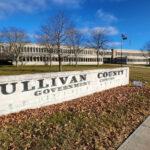NEWBURGH- Hudson Valley Pattern for Progress has released a new research brief that outlines the equipment, regulations, and benefits of next-generation wireless connectivity in the Hudson Valley, with a special focus on the role of local governments to permit the new infrastructure.
The report, Making it Mesh: How the Hudson Valley Can Prepare for Next-Gen Wireless, will educate the Hudson Valley about the complex infrastructure that must be deployed for our region to have fifth-generation (5G) wireless broadband connectivity. Demand on the wireless network has expanded and the the research brief highlighted how local policies, outdated zoning, and cumbersome permitting processes could hamper the deployment of 5G infrastructure unless communities prepare now.
“The deployment of 5G infrastructure throughout the Hudson Valley requires our civic leaders to strike a balance between improving connectivity and protecting the visual aesthetics of our communities,” said Pattern CEO Adam Bosch. “The next generation of wireless broadband relies on a greater quantity of small relay points that will be installed in many places. It is important for our local government leaders to prepare now by establishing easy-to-understand permitting processes, thinking about preferred sites for 5G infrastructure, and establishing design criteria for special places such as historic districts.”
According to the study, the new generation of wireless coverage relies on a greater quantity of small-cell nodes which rely more heavily on local municipalities for network buildout. These nodes are roughly the size of a backpack, and they are typically mounted on utility poles or buildings. Nodes are arranged as close as 500 feet apart in a mesh network that allows the small-cell nodes to relay greater quantities of data much faster than traditional cell towers.
According to the study, local government should prepare by reviewing and updating local regulations to ensure they are ready to address 5G applications, defining 5G infrastructure in zoning regulations and administrative policies, considering whether it’s helpful to identify preferred sites for small-cell nodes, and by establishing an application process and fee structure.
The report also recommends municipalities consider design standards that limit the visual impact of 5G nodes, which has emerged as a public concern.








